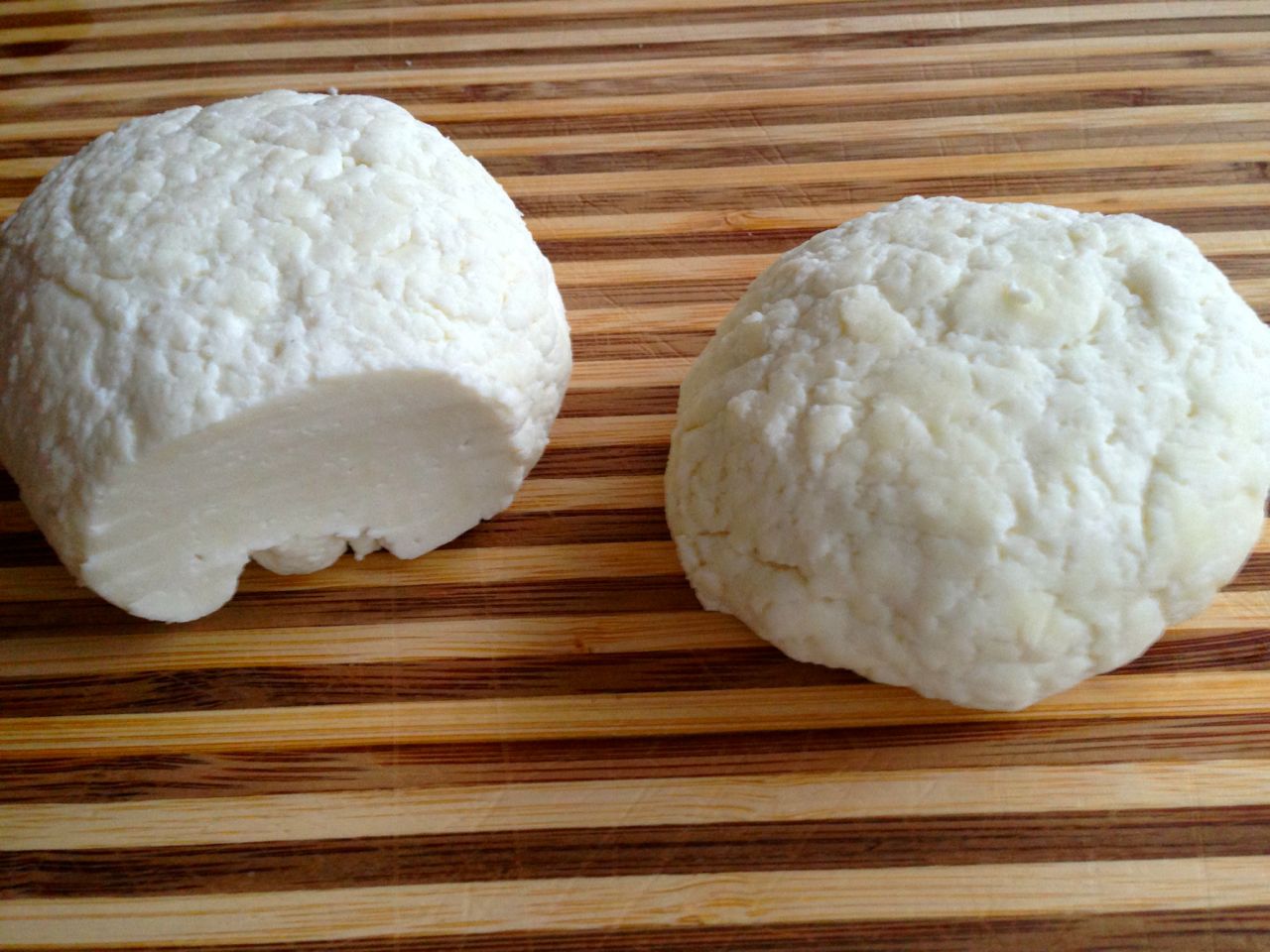
Mozzarella
Ingredients
- 4 litres of milk (min. 2%)†
- 1/2 pack thermophilic culture†† or 1/8 tsp
- 1/2 tsp rennet
- 1/8 tsp lipase (mild)
- 150 g salt (for the brine)
- thermometer (0-100°C)
- kitchen gloves for the kneading
- (Optional: pH meter, or pH strips)
Preparation
- Heat milk to 32°C (90°F) on medium heat
- Dissolve thermophilic culture and lipase in a bit of water
- Add this to the warm milk, stir well, cover
- Let rest for 30+ minutes to an hour (pH < 6.5)
- Dissolve the rennet in a bit of water
- Add rennet to milk, stir well, cover
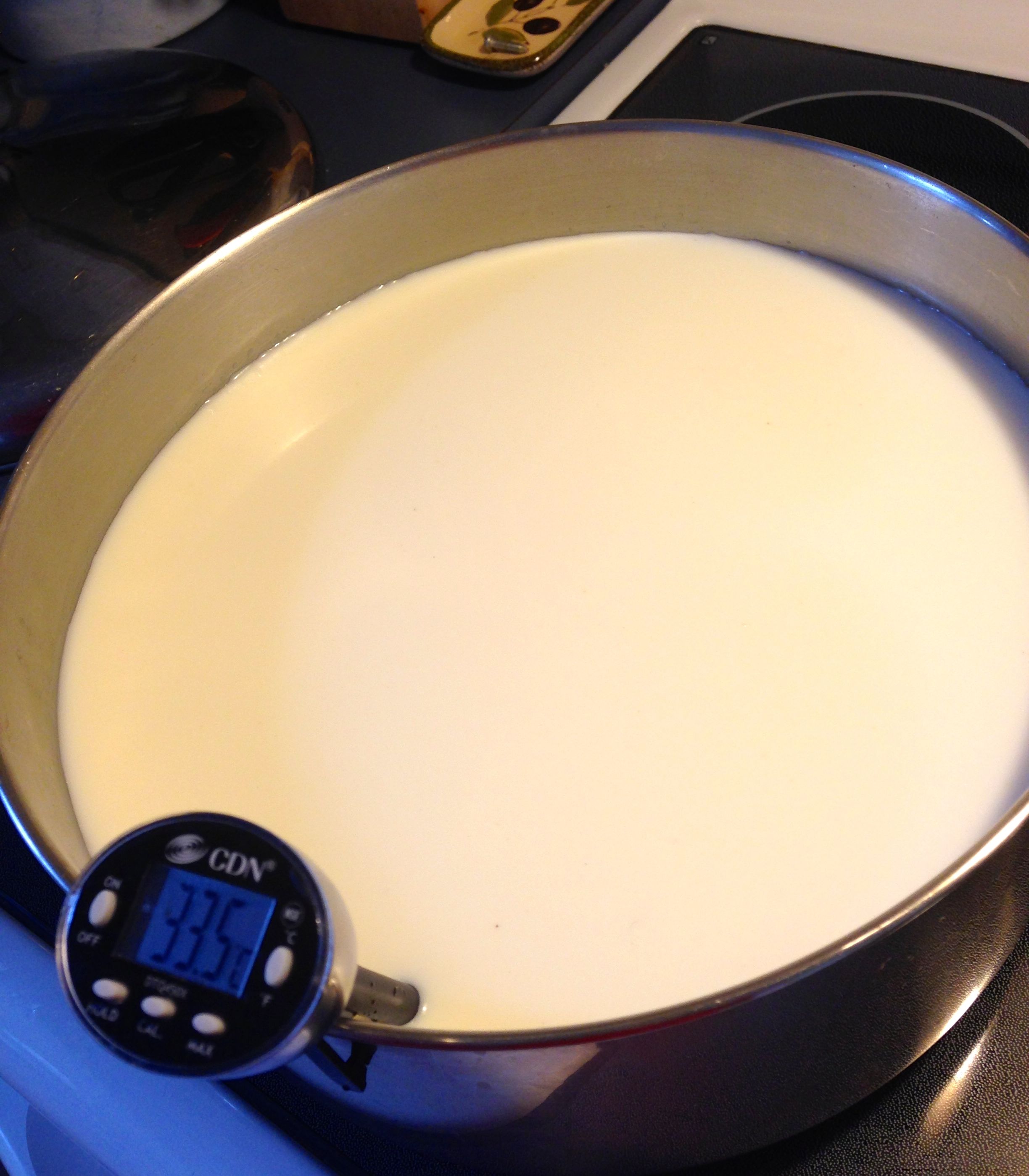
- Let the curd form, for 1 hour to 1 1/2 hour. It should look like one massive blob of smooth tofu. Should give a “clean break” if you dip a finger in it and lift it:
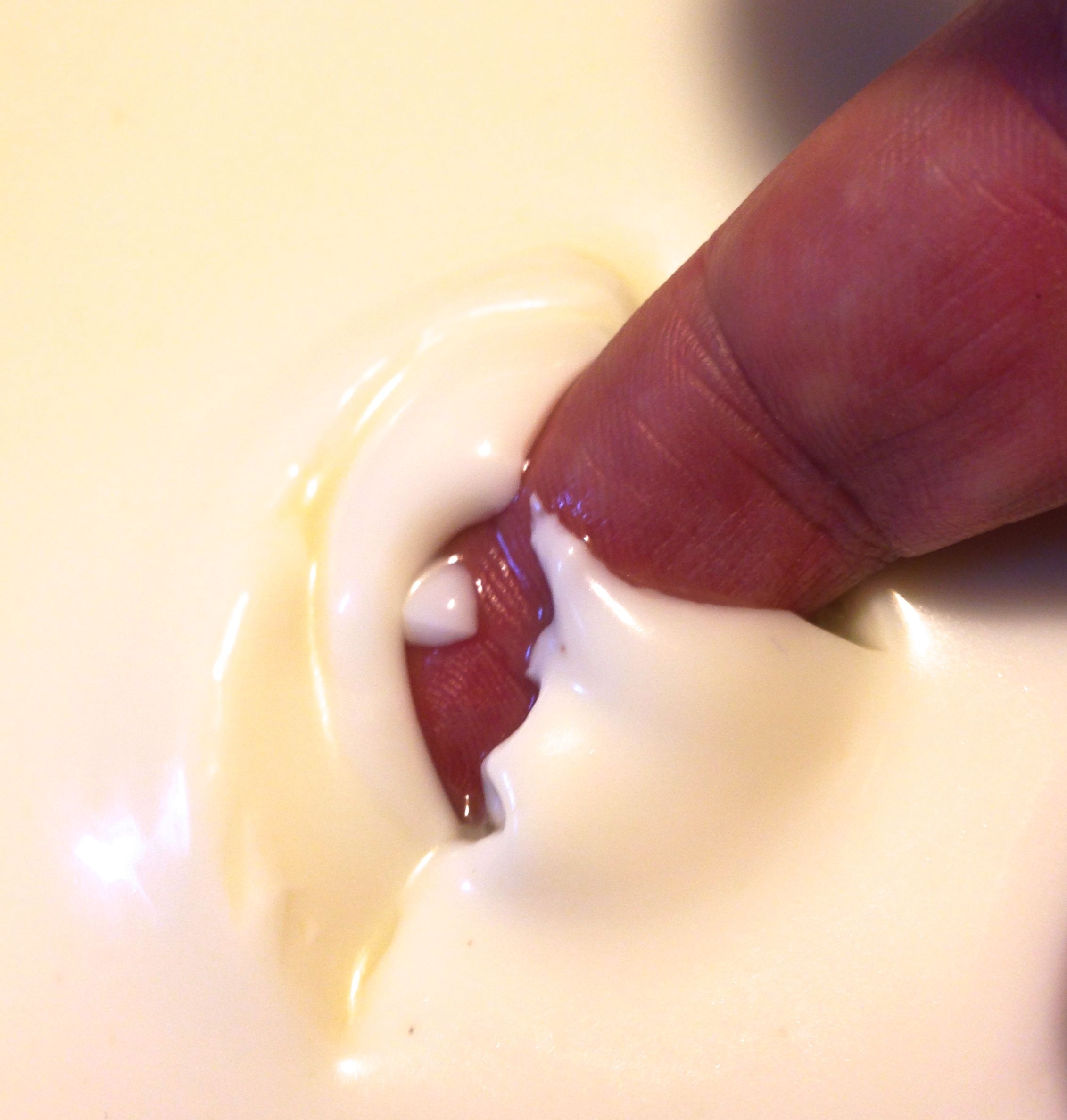
- Cut the curds in 1.5 cm blobs with a big knife, first in one direction, then 90 across, then across the height.
- Let rest for 15 minutes
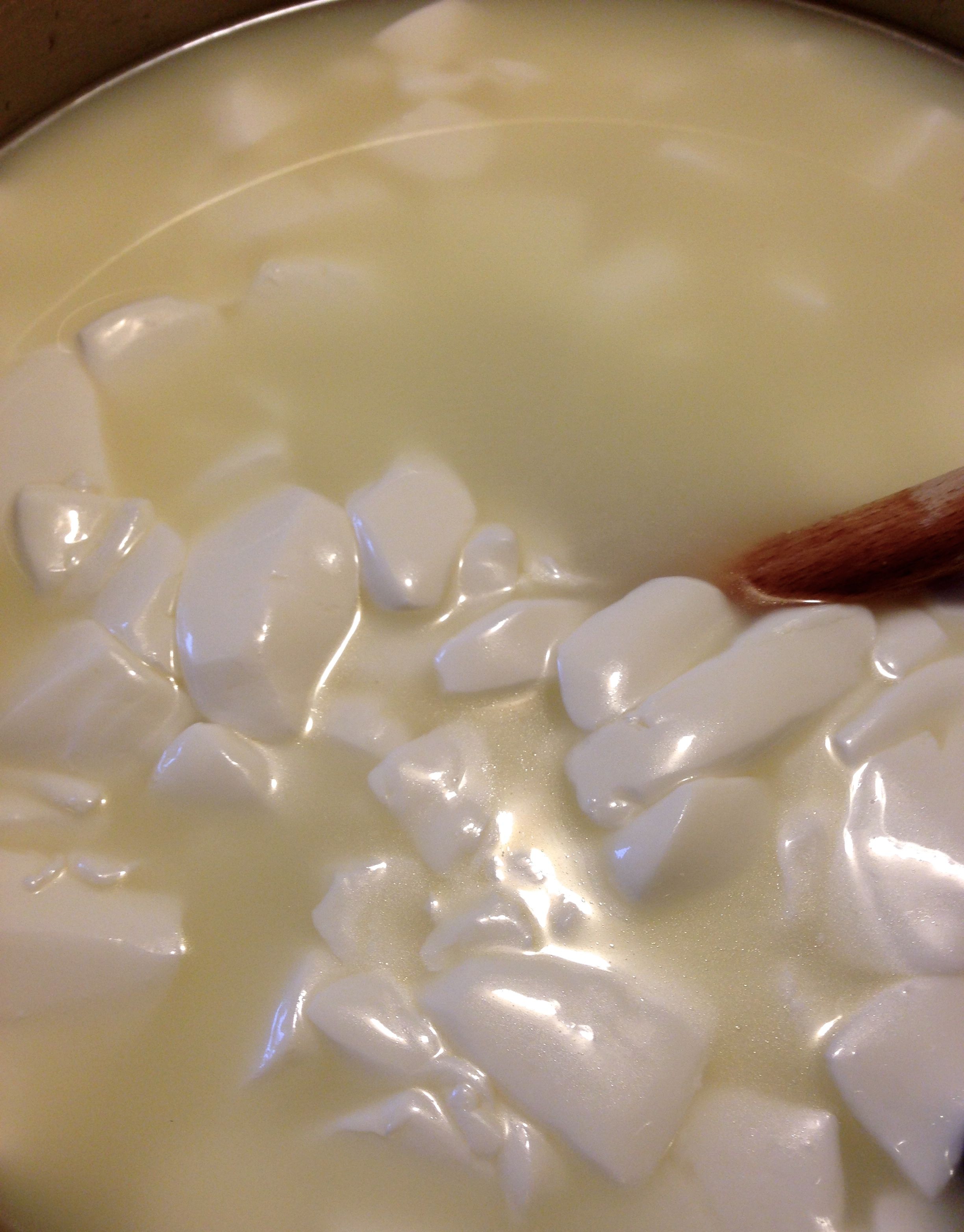
- Heat (very low) the curds to 38°C (100°F), while slowly stirring constantly
- Let rest, covered, for 5 minutes
- Drain the whey from the curds‡
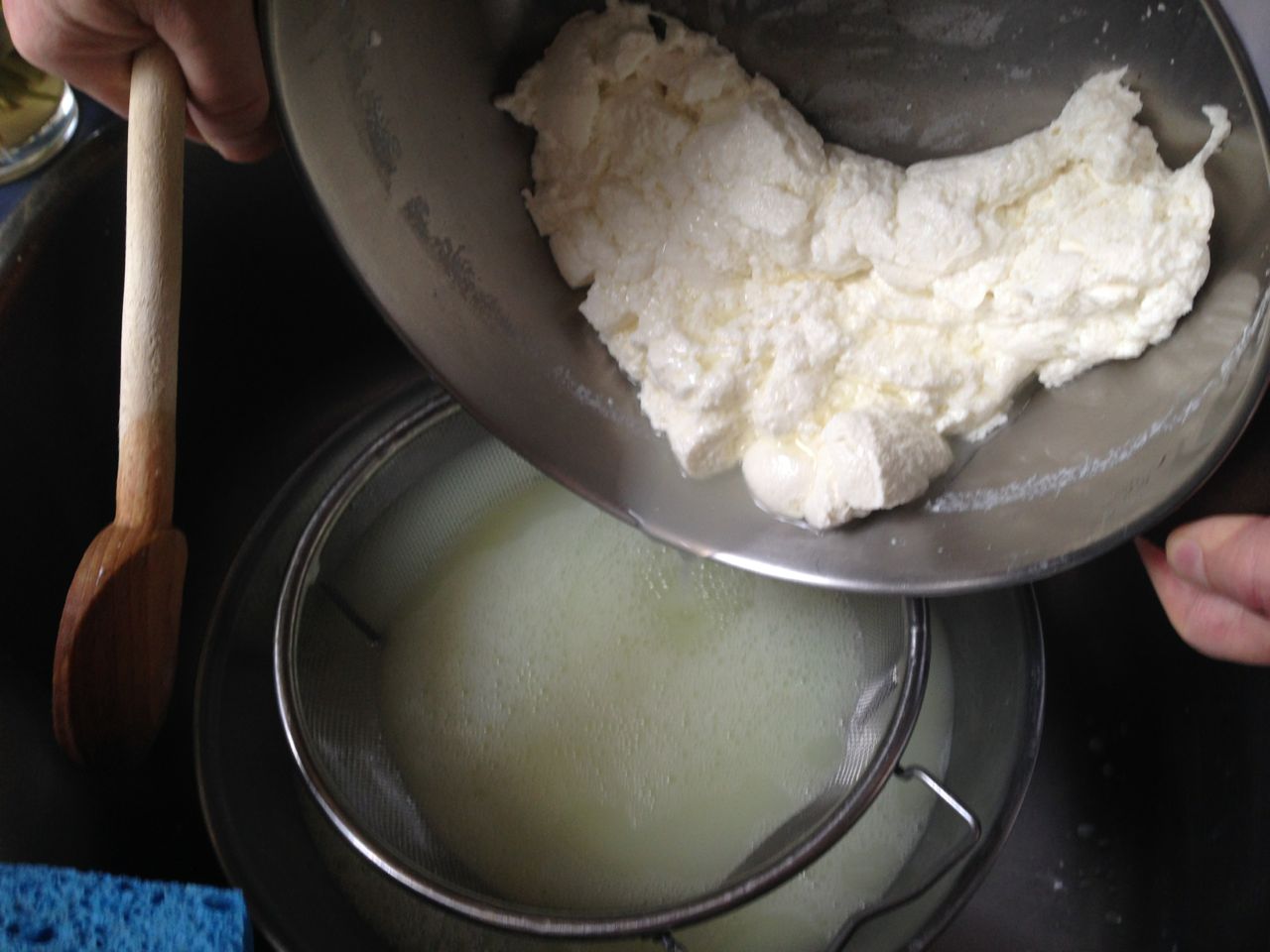
- Keep the pot with the curds in a hot bath in the sink at about 40°C (104°F)
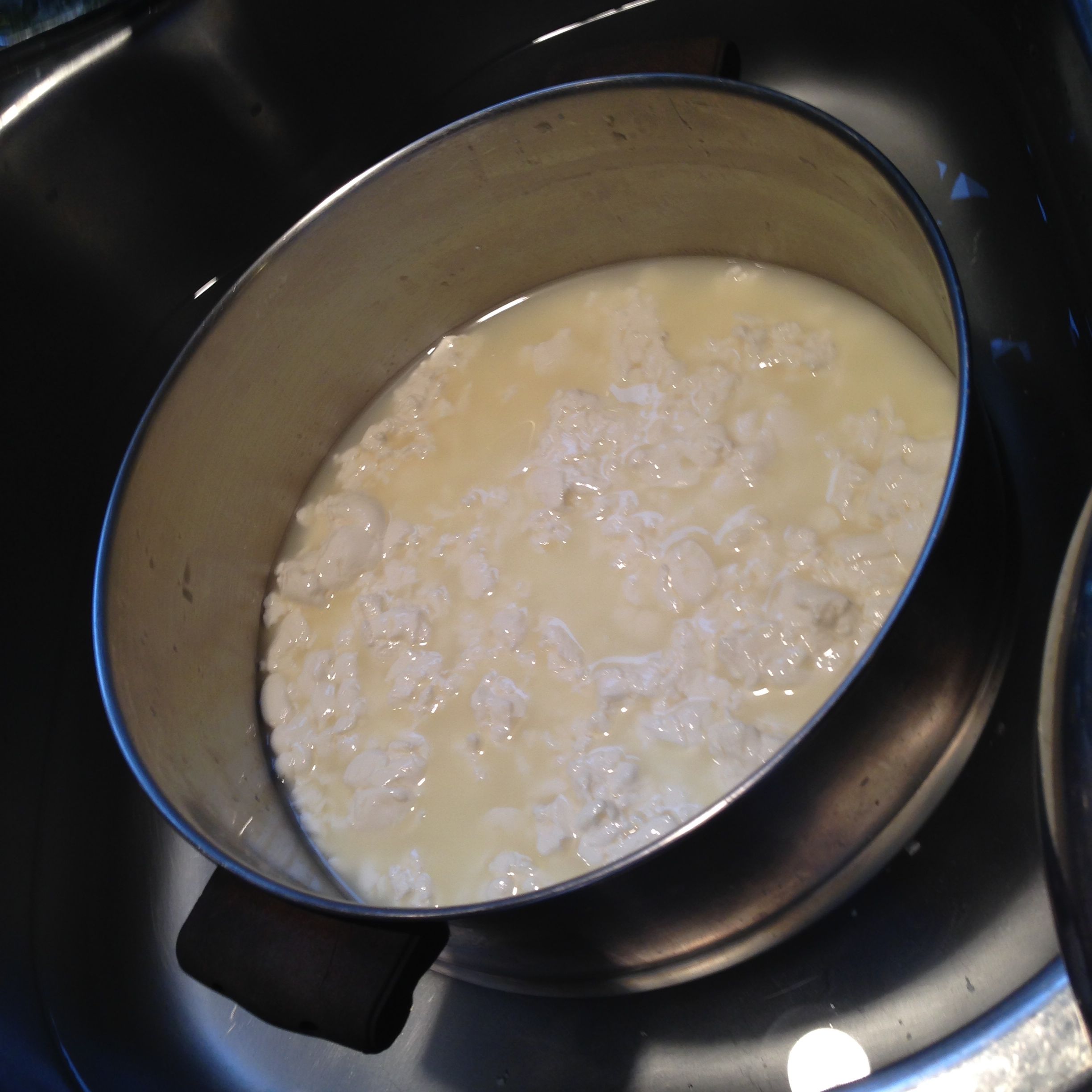
- For 2 1/2 hour, drain off once in a while the whey and flip the curds over. (Target pH = 5.2)
- Put the curds in 75°C (190°F) water, with a strainer. Let them warm up. Take half of them out.
- Separate the curds in small chunks (2 cm), and then knead them with your hands (gloved, it’s hot); do the other half; this take 5 to 15 minutes.

- Shape them into smooth balls:

- In a liter of cold water, dissolve 150 g of salt, and place the cheese balls in this brine:
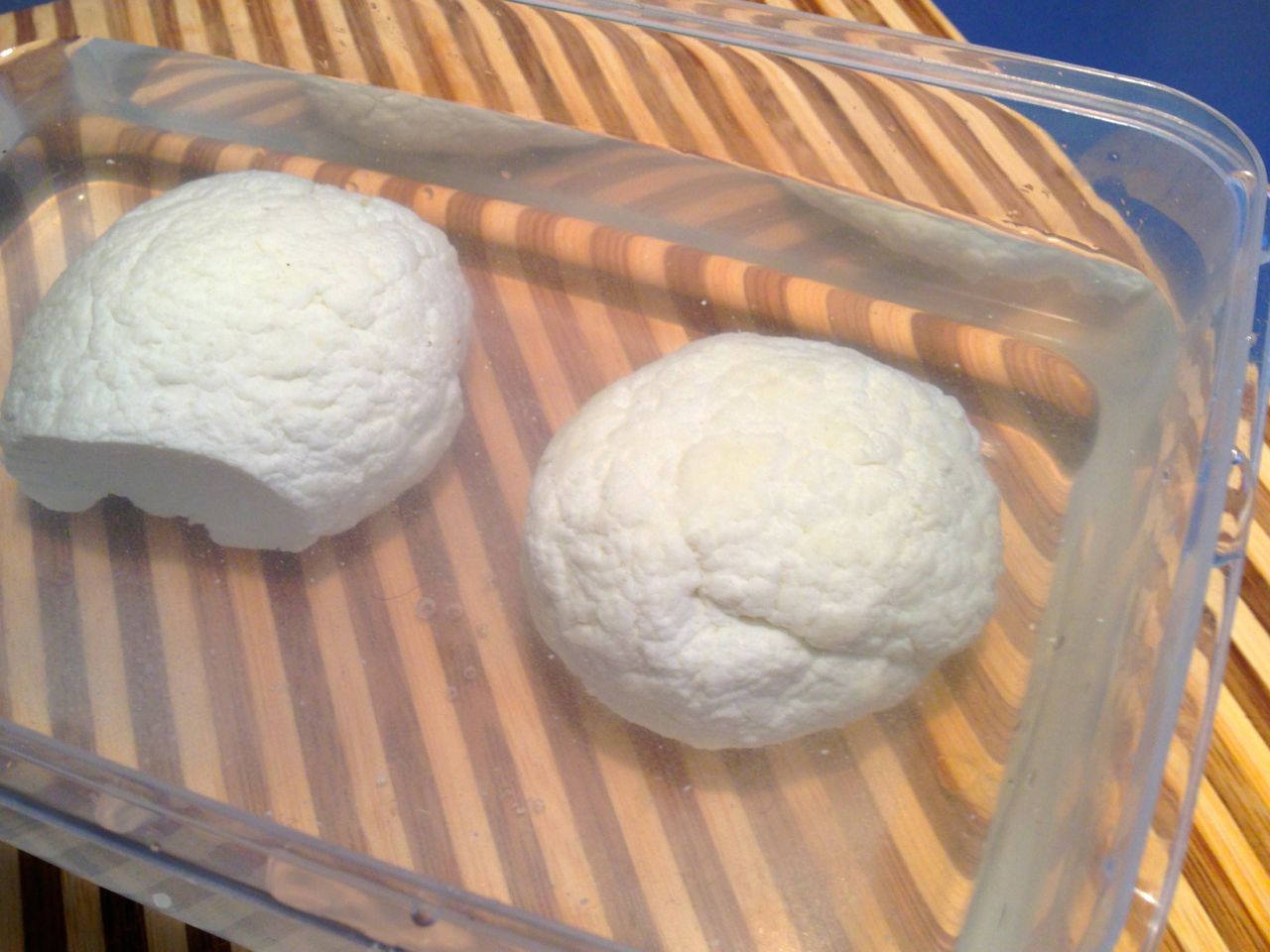
- Wait at least an hour in the brine.
- Now it is ready to use.
Notes:
† Non-homogenized whole milk at 3.25% or more is best. Whole goat milk is good too; it produces a drier cheese.
†† Thermophilic culture = Streptococcus thermophilus salivarius, Lactobacillus delbrueckii bulgaricus, Lactobacillus helveticus (it is similar to what is used to make natural yogurt). Example: Danisco’s Choozit TM 81
‡ The whey is good; you can drink some, use it in a soup, etc… or make ricotta (a spoonful or two)
The yield is approx. 480 g of cheese for 4 litres of milk; that’s 3.5 litres of whey!
With goat milk however, the ricotta is richer, smoother and more abundant.